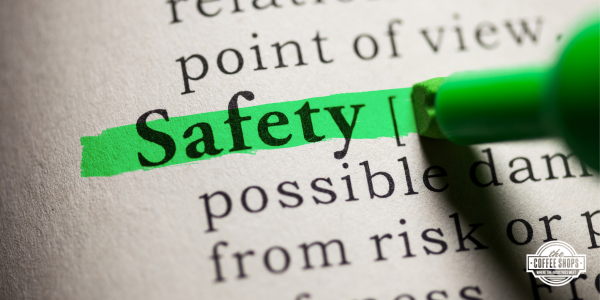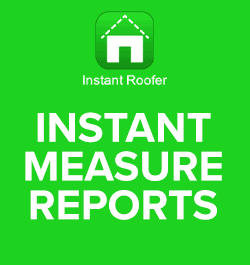UP TO THE MINUTE
Reducing liability with smart safety practices
November 21, 2024 at 6:00 a.m.By Cotney Consulting Group.
As the close of 2024 roofing season approaches, now is the time to review and reinforce your safety protocols to ensure a secure work environment for your crew.
Roofing is one of the most hazardous professions, with workers regularly facing risks like falls, burns from hot tar, electrocution and injuries from falling materials. With the roofing season approaching, contractors must address these dangers proactively. By implementing safety measures, contractors can reduce incidents, lower insurance premiums, avoid lawsuits and maintain their business's reputation.
Here are ten tips that roofing contractors can use to minimize safety hazards and reduce liability risks:
1 - Implement safety procedure guidelines
Before any job begins, conduct a safety huddle with your crew to discuss the work environment, identify potential hazards and review the necessary safety procedures. This practice fosters teamwork and ensures everyone knows the rules to prevent incidents.
2 - Wear personal protective equipment (PPE)
Make PPE a mandatory requirement on all roofing projects. Essential equipment includes hard hats or helmets, fall protection harnesses, safety ropes and ties, steel-toe footwear with slip-resistant soles, eye protection and gloves. Proper PPE minimizes the risk of injuries, making it a non-negotiable component of your safety plan.
3 - Dress appropriately for the job
Roofers should wear comfortable, durable and suitable clothing for the weather. Loose or restrictive clothing can hinder movement, increasing the risk of accidents. Long sleeves and pants offer protection against weather elements, while breathable fabrics are advisable for summer. On cooler days, layered clothing can help regulate body temperature. Appropriate attire is the first line of defense against various hazards, including sunstroke, frostbite and insect bites.
4 - Avoid distractions while working
Distractions can lead to accidents. Insist that your crew mutes or turns off their mobile phones while working. Consider designating a ground crew member to receive and relay any urgent messages to those working on the roof. Additionally, remind your team to avoid using their phones while driving to and from job sites, as distracted driving is a significant safety hazard.
5 - Establish walkway paths
Designating secure walkway paths on the roof is vital for crew safety and integrity. Each Job may require different paths, especially when navigating uneven surfaces, slippery spots or areas with rooftop equipment. Identifying these pathways helps reduce the risk of slips, trips and falls, protecting your team and the building's occupants.
6 - Use high-quality ladders and tools
Do not compromise on the quality of ladders and tools. Invest in high-quality ladders and ensure there are enough for your team. Inspect them regularly to confirm they are in good condition and secure them during use to maintain stability. On steep-sloped roofs, enhance safety by setting up netting, guardrails and scaffolding when required. Guardrails provide a critical visual and physical barrier that prevents falls, particularly on slip-prone surfaces like slate and tile roofs.
7 - Ensure your team is trained to handle power tools
Roofers often use various power tools, from drills to hot torches. Regular training on the correct use and maintenance of these tools is essential. Always inspect each tool before use; if you find any defects, discard or repair it. Proper training and inspection reduce the risk of tool-related injuries.
8 - Exercise caution when handling hot bitumen
Handling hot bitumen is one of the most dangerous aspects of roofing, with severe burn injuries posing a constant threat. Your team must be trained thoroughly in safely handling hot bitumen, including proper filling, placement and disposal methods. For instance, never fill buckets over 4 inches (100 mm) from the top and avoid carrying hot bitumen on frosty, icy or wet roofs.
Implement a "fire-watch person" to monitor all hot tar or torch-down jobs and ensure that fire extinguishers are readily available. Also, maintain a safe distance between flammable materials and heat sources. Strictly enforcing these protocols reduces the risk of burns and fire-related accidents.
9 - Monitor weather conditions
Weather plays a significant role in roofing safety. Extreme temperatures, thunderstorms, rain, windstorms and snow can heighten the risk of accidents. Always check the weather forecast before starting work. If inclement weather is expected, postpone the Job. Extreme weather increases the risk of slips and falls and can also affect the performance of roofing materials.
10 - Secure the worksite
At the end of each workday, clear the site of clutter and debris and secure all tools, equipment and materials. Additionally, ensure that access to the roof and job site is locked up to prevent theft and vandalism. A secure worksite minimizes risks and reduces the potential for accidents or damage, which could lead to costly insurance claims.
Why safety practices matter
Because construction-related fatalities ranked among the highest of all industries. Falls, often caused by missing guardrails, improperly used fall protection gear and poorly maintained ladders, are the leading cause of fatalities in roofing. Roofing contractors can significantly reduce these risks by implementing these ten safety practices.
Insurance companies also take note of the safety measures roofing companies employ. Adhering to these best practices can help lower your insurance premiums, as insurers are more likely to offer better rates to contractors prioritizing risk management. A comprehensive safety plan is essential for legal protection and maintaining an upstanding reputation in the industry.
Reducing liability risks in roofing requires a proactive approach to safety, such as implementing strict safety guidelines, using quality equipment, ensuring proper training and being mindful of weather conditions. Roofing contractors can protect workers, limit liability risks and avoid costly insurance claims. As the close of 2024 roofing season approaches, now is the time to review and reinforce your safety protocols to ensure a secure work environment for your crew.
Learn more about Cotney Consulting Group in their Coffee Shop Directory or visit www.cotneyconsulting.com.






















Comments
Leave a Reply
Have an account? Login to leave a comment!
Sign In